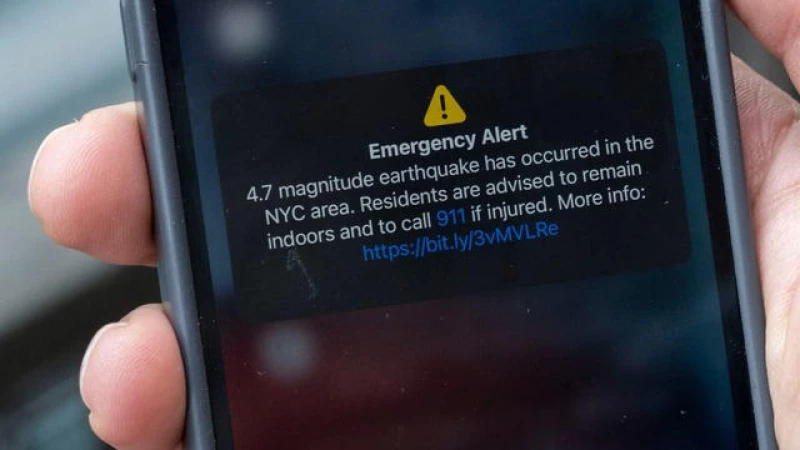An earthquake shook up a large portion of the Northeast early on Friday, causing tremors felt throughout the New York City metropolitan area and in areas ranging from Baltimore and Philadelphia up to New England.
Learn more about earthquake magnitudes and how they are measured.
How do scientists measure earthquakes?
Seismic stations are used to monitor earthquakes by tracking the movement of the ground, as explained by the USGS. These stations collect data on the earth's motion and vibrations during an earthquake, as well as the energy released from the hypocenter, which is the origin point of the earthquake beneath the earth's surface.
Various scales are employed to measure earthquakes. The most common method is to determine the magnitude of an earthquake, which indicates its strength. While the Richter scale was previously used by geologists, it is now considered outdated and obsolete. Additionally, earthquakes can be characterized by their intensity, which refers to the level of shaking and damage caused by the seismic event.
Understanding Earthquake Magnitude Scale
Earthquakes are measured using the moment magnitude scale, which is the most widely used method for determining the size of an earthquake. This scale, employed by the US Geological Survey (USGS), calculates the magnitude of earthquakes based on various factors.
The term "moment" in the scale refers to a physical quantity that is determined by the slip on a fault line multiplied by the area of the fault surface that moved. By analyzing seismograms and other geological data, scientists can estimate the moment of an earthquake, which is then converted into a magnitude number to indicate the earthquake's size.
Each whole number increase on the magnitude scale corresponds to a tenfold increase in ground motion recorded by seismic instruments. For example, a magnitude 5 earthquake produces about ten times more ground movement than a magnitude 4 earthquake, as explained by the Department of Geological Mining Engineering and Sciences at Michigan Technological University.
While there is no upper limit to the magnitude scale, earthquakes of magnitude 10 or higher are extremely rare due to the absence of fault lines long enough to generate such powerful quakes, according to USGS.
Interestingly, earthquakes can sometimes have negative magnitudes, a phenomenon acknowledged by the USGS, highlighting the diverse range of seismic events that can occur.
The Evolution of Earthquake Measurement Scales
Earthquakes have been measured using various scales throughout history. One of the most well-known scales, the Richter Scale, was developed by Charles Richter in the 1930s. However, this scale had limitations and was later replaced by more comprehensive scales like the moment magnitude scale.
The Strongest Recorded Earthquakes
The strongest earthquake ever recorded occurred in Chile in 1960. Known as the "megaquake," it had a magnitude of 9.5 and caused widespread devastation, including triggering tsunamis that affected regions across the globe.
In the United States, the most powerful earthquake on record was the magnitude 9.2 Great Alaska Earthquake of 1964, which also generated a destructive tsunami.
Understanding Earthquake Magnitudes
While the Richter Scale is no longer widely used, modern scales provide a more accurate representation of an earthquake's size and impact. A 4.8-magnitude earthquake, like any other, should be evaluated in the context of its location, depth, and potential for damage.
Reports indicate that a series of earthquakes ranging from 2.5 to 5.4 in magnitude have been felt in the Northeast region. Fortunately, these quakes have only resulted in minor damage, with no significant injuries reported thus far. The recent quake, measuring 4.8 on the Richter scale, is among the stronger tremors experienced in the area in the last century, although it does not break any records. Notably, a 5.0 magnitude quake was recorded in New York City back in 1884, and in 2011, a 5.8 magnitude quake originating in Virginia caused widespread shaking along the entire East Coast.
Earthquakes ranging from 5.5 to 6.0 on the Richter scale have the potential to cause some damage, while those measuring 6.1 to 6.9 can result in significant destruction, especially in densely populated areas. A major earthquake is classified as 7.0 to 7.9 in magnitude, capable of causing serious damage. An earthquake of 8.0 magnitude or higher is considered massive and has the capacity to completely devastate communities near its epicenter.
Officials have stated that there is no threat of a tsunami following today's earthquake, and the likelihood of aftershocks remains low.







